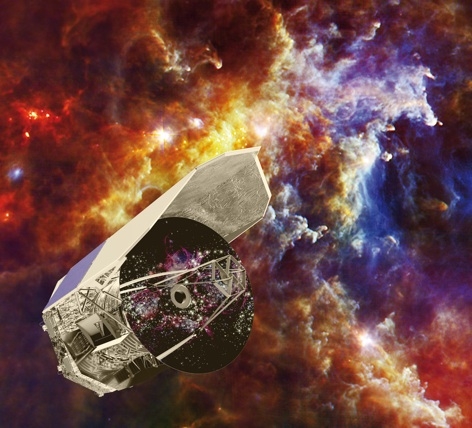Star gazers
The next generation of space telescopes are ready to launch, with a battery of new technology that will help explain the formation of stars and galaxies. Stuart Nathan reports


In the mid-1700s, a young German musician, William Herschel, moved to England and took up astronomy as a hobby. He soon realised that his new-found interest was hampered; he couldn’t buy a telescope good enough to give him a sharp view of the moon.
So he made his own, learning how to cast and polish metal mirrors. Within a few years he was building bigger and better instruments, inventing a new alloy to provide even clearer images and spending his days making mirror moulds from horse dung, pouring the molten mixture of copper and tin, then polishing the curved metal by hand for hours on end.
It was with one of these telescopes that he discovered Uranus in 1781; with another, he formulated a theory of the birth of stars within nebulae; and with another, in 1800, he discovered infra-red light.
It is fitting, then, that the latest and largest telescope to be sent into space bears Herschel’s name. Due to be launched on 6 May together with another telescope called Planck, the Herschel space telescope is the European Space Agency’s contribution to the growing field of infrared (IR) astronomy. Its primary mirror is the largest ever sent into space, at 3.5m in diameter, and it will use a battery of new technology to capture and interpret data.
Looking far into the IR, its users hope to explain how stars form in our galaxy and how the first galaxies formed soon after the Big Bang.
Herschel is the first major space observatory to be launched since the Hubble telescope, the stunning images of which have become icons of astronomy. However, Herschel is very much of a new generation. Not only is its mirror larger than Hubble’s 2.4m diameter, it also has a very different range of capabilities. Hubble is mainly an optical telescope, looking a little way into the ultraviolet and UV on either side, but that means it can only investigate some science.
Register now to continue reading
Thanks for visiting The Engineer. You’ve now reached your monthly limit of premium content. Register for free to unlock unlimited access to all of our premium content, as well as the latest technology news, industry opinion and special reports.
Benefits of registering
-
In-depth insights and coverage of key emerging trends
-
Unrestricted access to special reports throughout the year
-
Daily technology news delivered straight to your inbox










Water Sector Talent Exodus Could Cripple The Sector
Well let´s do a little experiment. My last (10.4.25) half-yearly water/waste water bill from Severn Trent was £98.29. How much does not-for-profit Dŵr...